For several days I had noticed a pair of House Finches flying to and from a holly near my front porch. Typically, just standing next to the bush for longer than a few seconds would cause a bird to bolt from deep within the leaves near the top.
I suspected the finches had constructed a nest, and I retrieved a step ladder in order to have a better look. I was surprised by what I found
The House Finches were indeed nesting in the bush off my front porch, and when I examined the nest more carefully I made an interesting discovery. The nest contained three light blue House Finch eggs, but unexpectedly, it also held a fourth and different kind of egg. This one was white with brown speckles and slightly larger than the others.
Clearly this fourth egg did not belong with the other three, and a little research revealed that this egg belonged to a different species of bird altogether, the Brown-headed Cowbird.
The cowbird is a what is known as a parasitic species. It lays its eggs in the nest of other, smaller birds. The host species (in this case the House Finch) then incubates the cowbirds eggs along with its own, and when the eggs hatch, the larger cowbird juvenile is frequently able to out-compete the host bird’s young for parental care, due to its larger size.
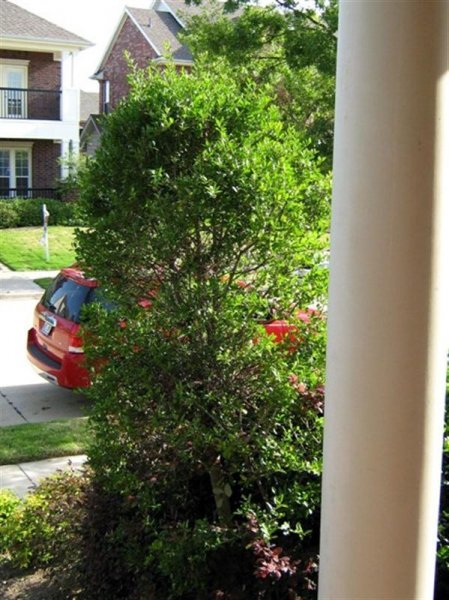
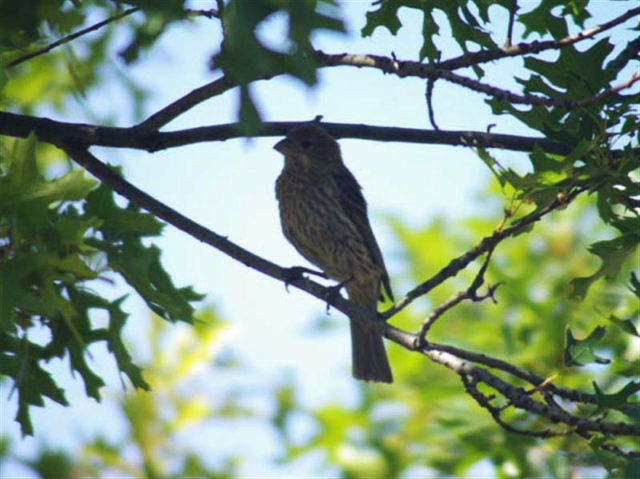
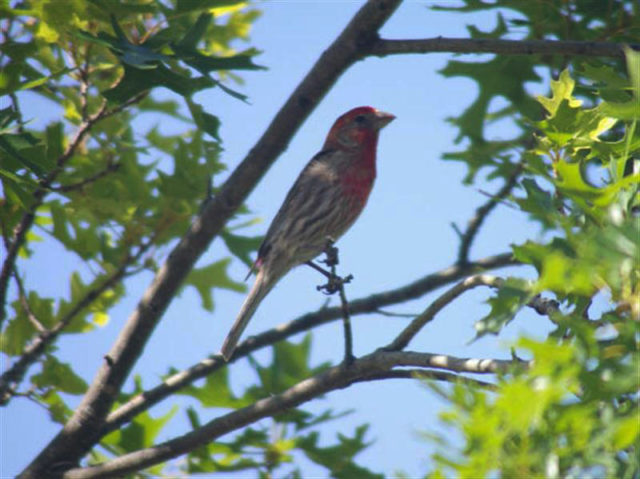
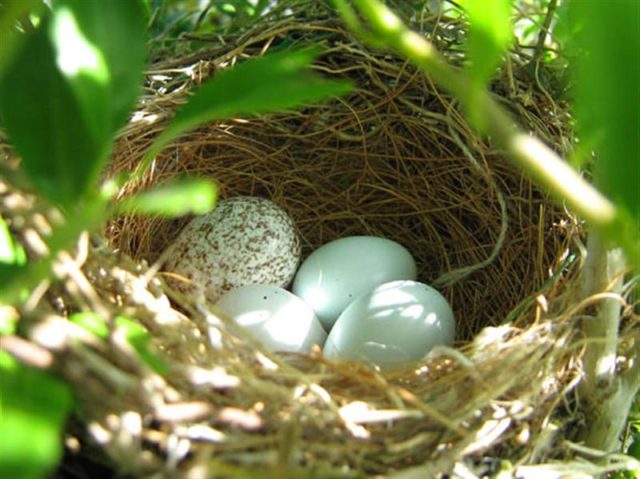
House Finch eggs are a light pale blue
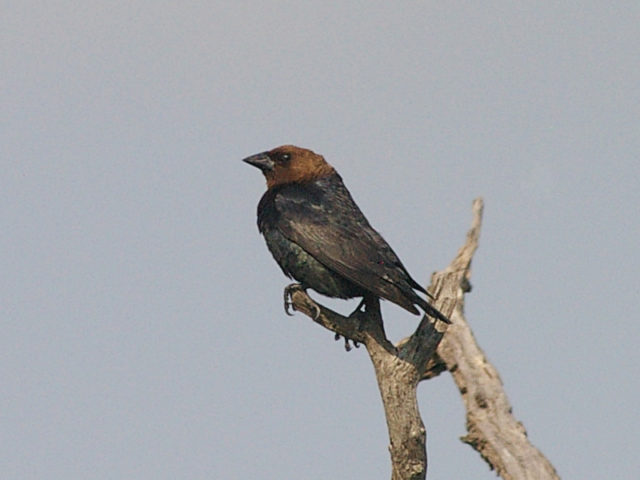
They lay their eggs in the nests of other birds. The host species will then incubate
the eggs and raise the cowbird young
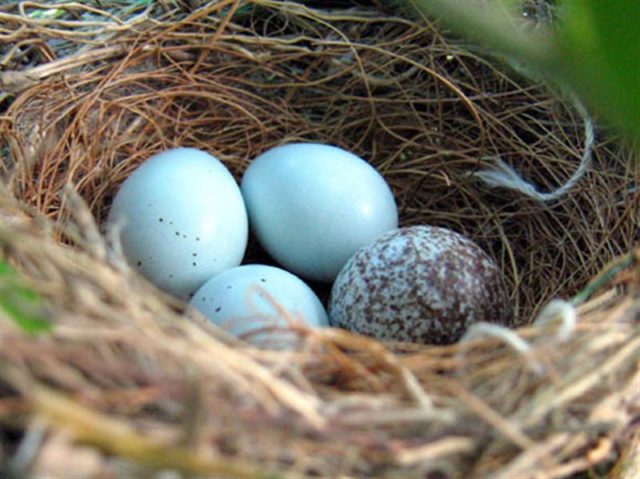
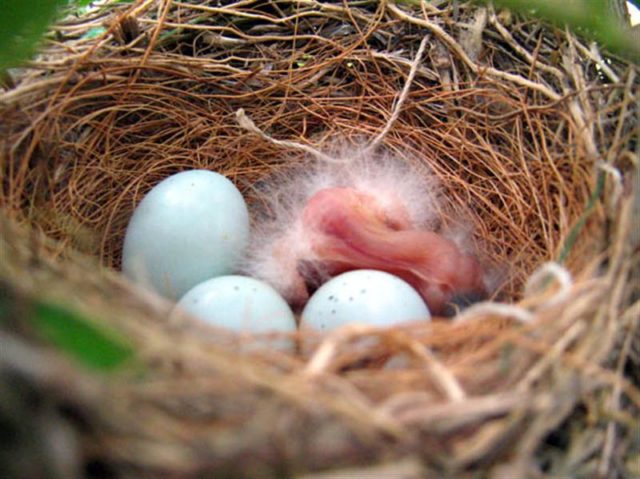
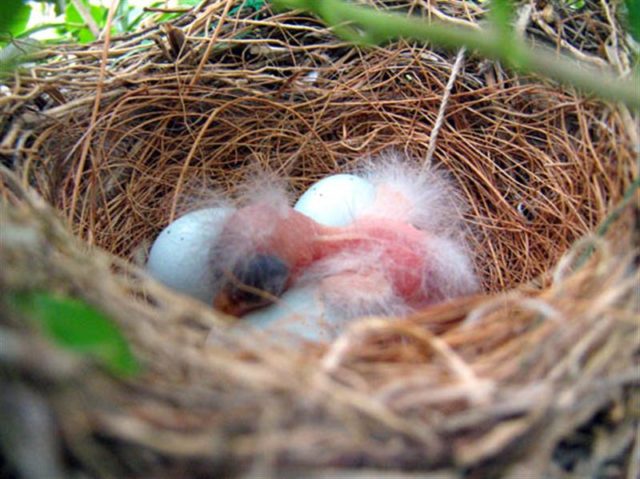
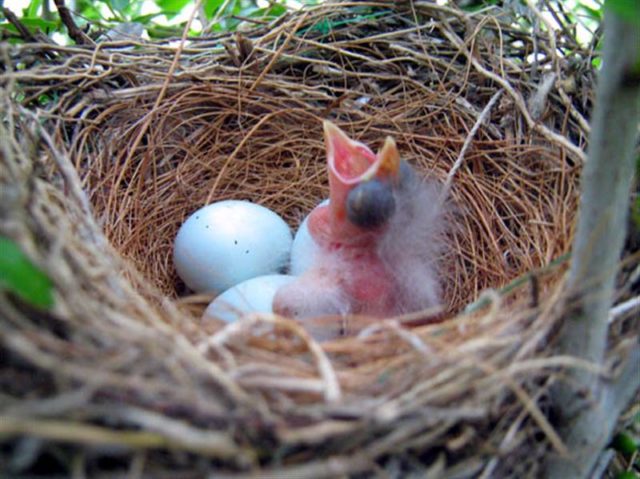
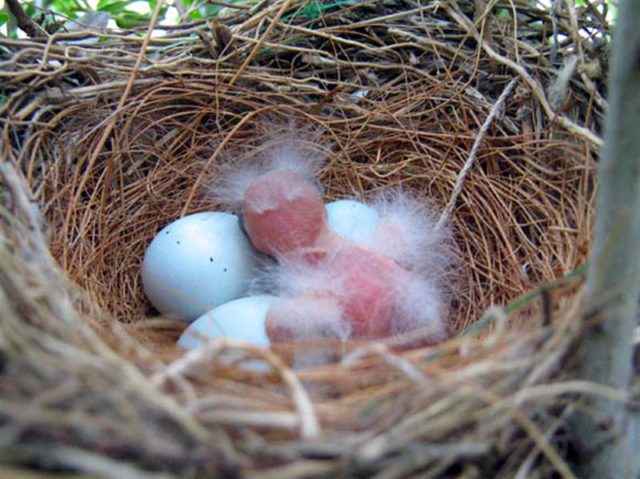
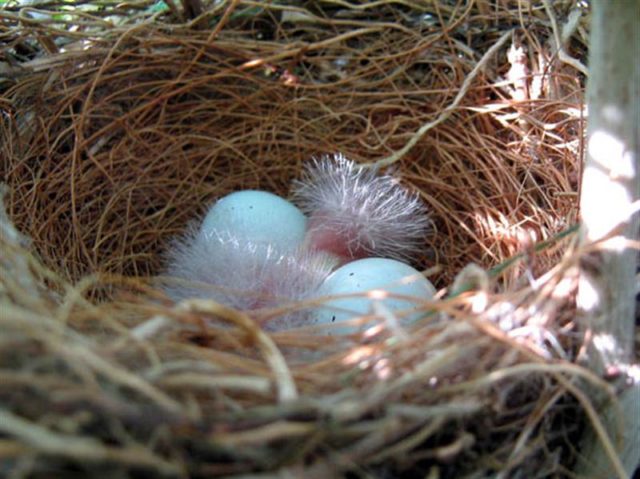
eggs had hatched. Pictured is a baby House Finch

The Brown-head Cowbird has fine downy feathers (left), while the House Finch
baby has coarse feathers
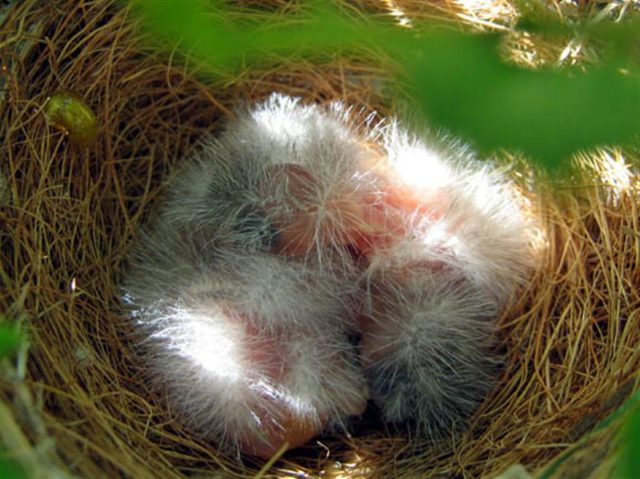
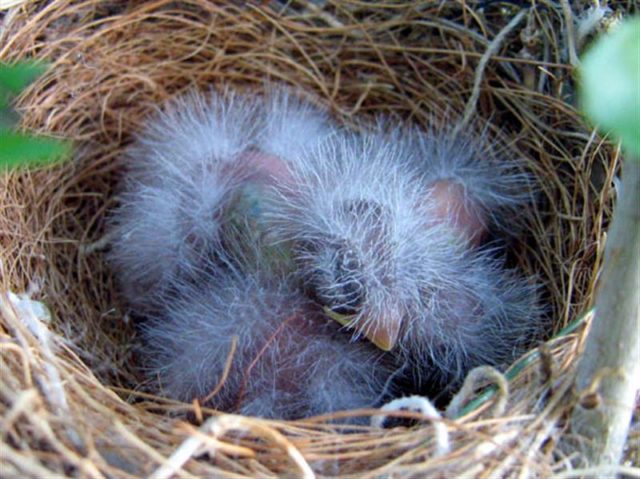
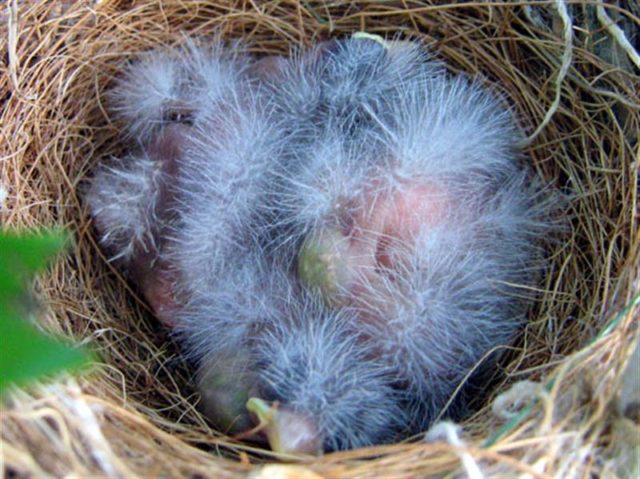
The cowbird requires a diet of insects in order to survive.
This probably explains the cowbird’s quick exit from the nest
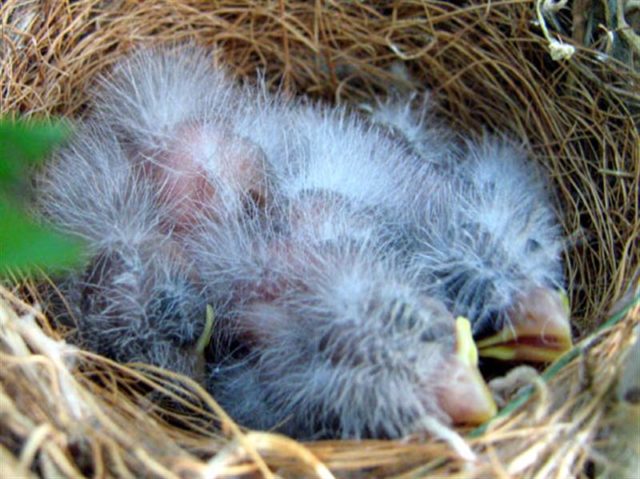
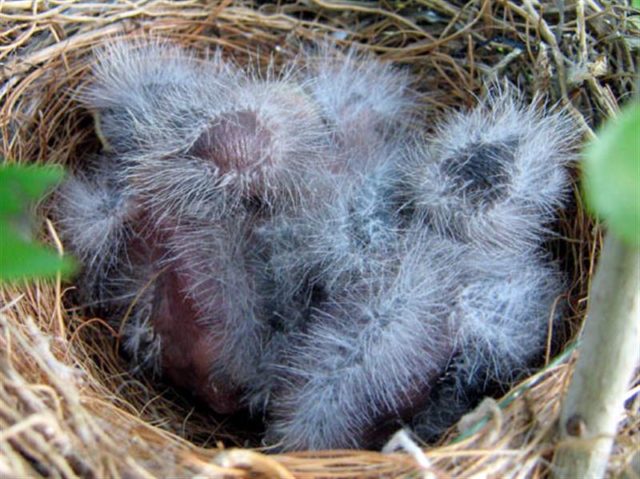
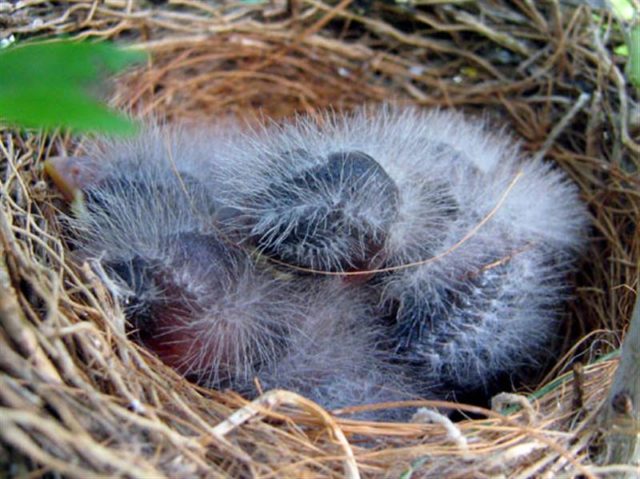
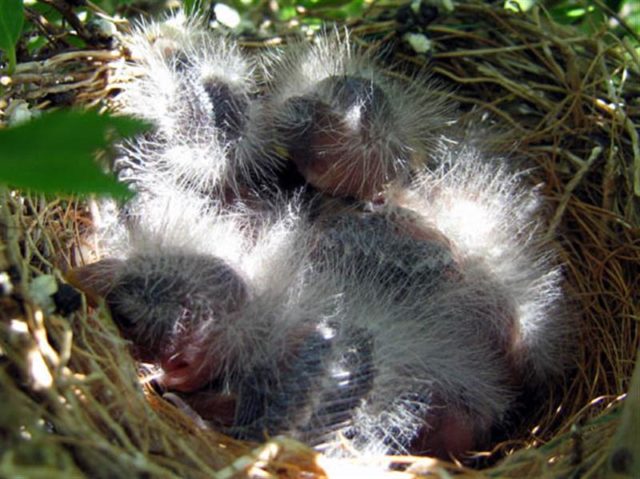
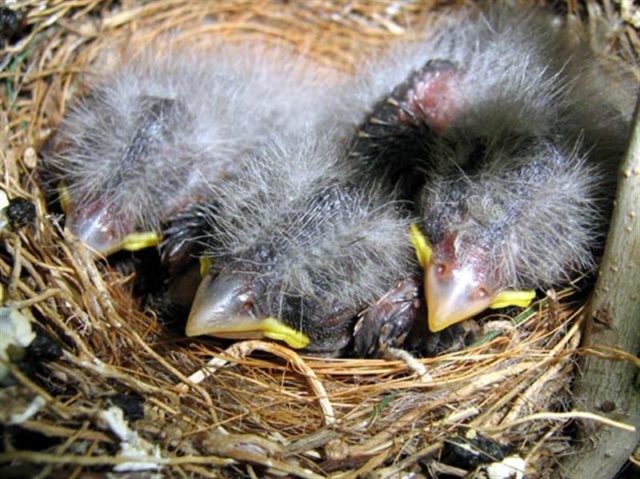
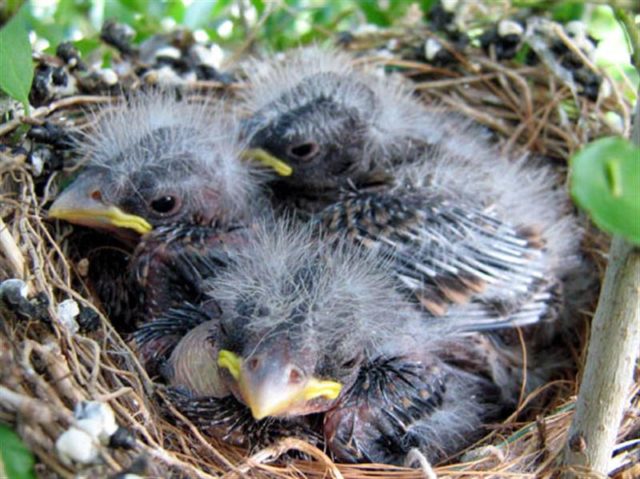
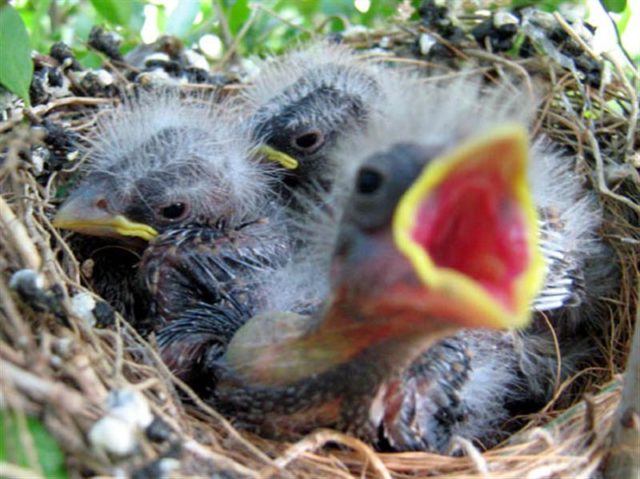
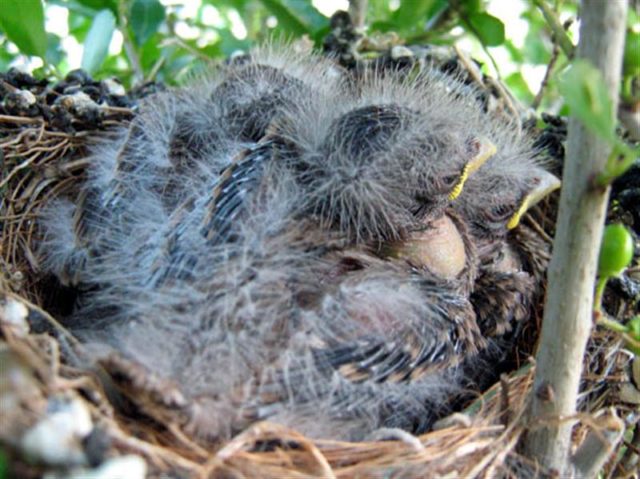
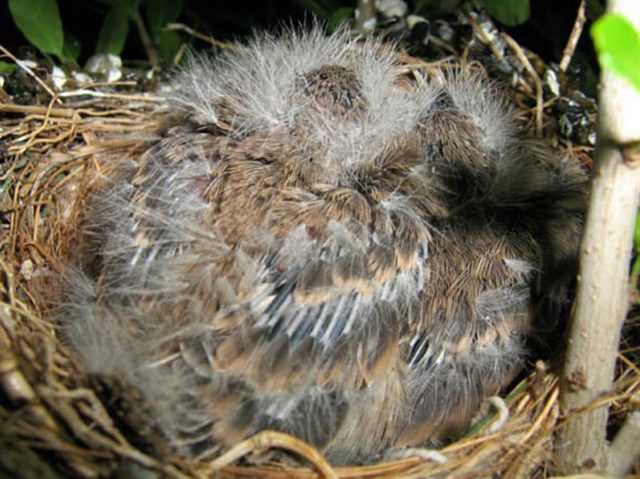
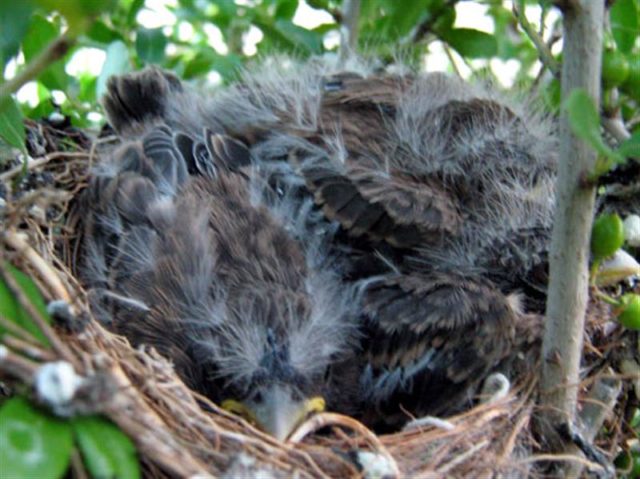
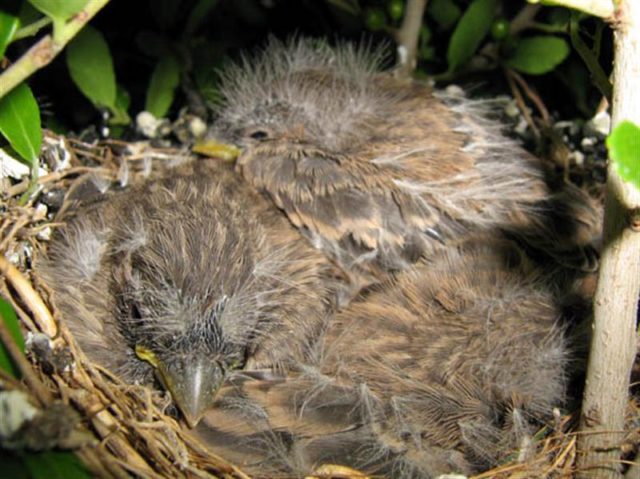

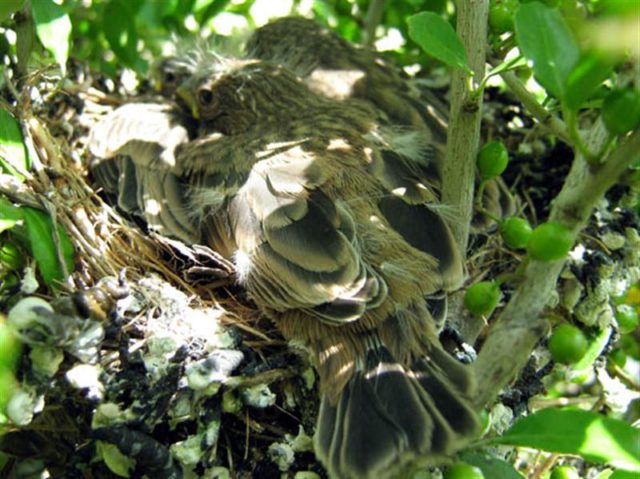
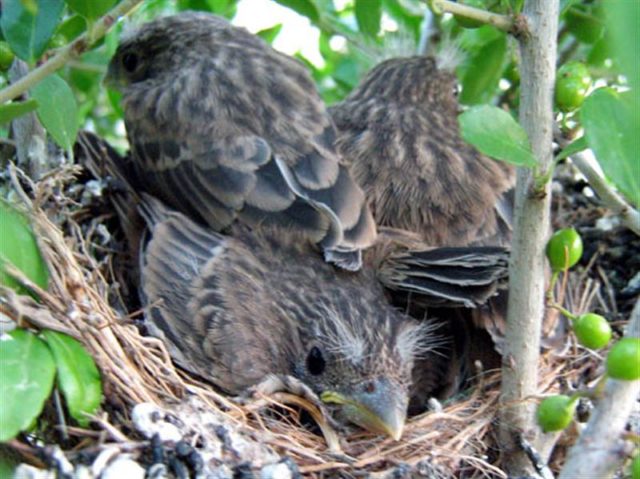
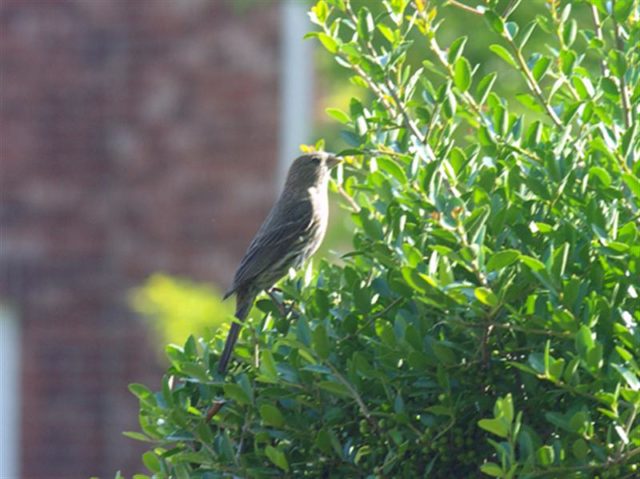
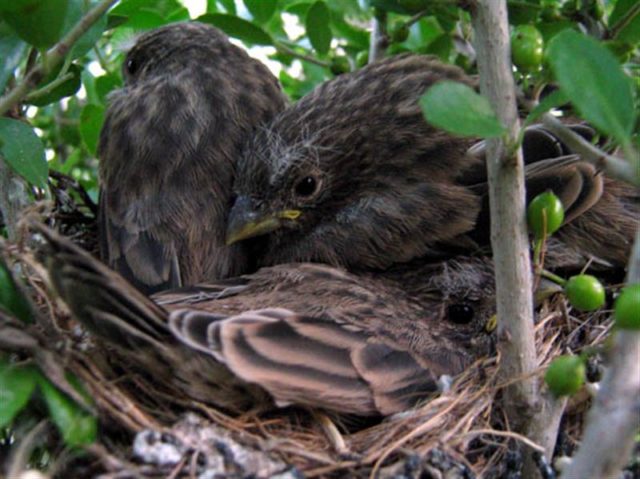
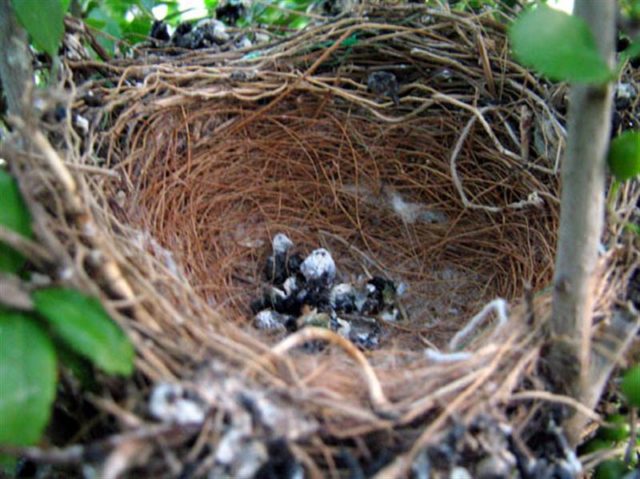
| County | – | Denton |
|
| City | – | Carrollton | |
| Date | – | May 11, 2008 – Jun 3, 2008 | |
| Time of Day | – | Various | |
| Temperature | – | Various | |
| Weather | – | Various | |
| Habitat | – | Residential-Single Family | |
| Type of Behavior | – | Care of Young, Nesting | |
| Gender | – | Mixed | |
| Maturity | – | Mixed | |
| Observer | – | Chris Jackson |


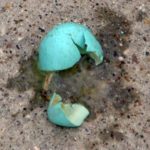
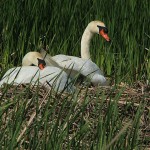
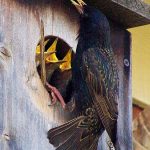
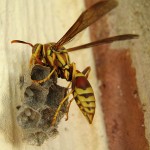
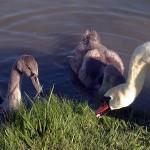
Pretty cool.
I discovered this bit of information on wikipedia this afternoon. If true, it would explain what happened to the cowbird nestling in this observation:
Chris, I keep discovering gems in your blog. This is a great series of photographs. Thanks again for doing the blog.
Thanks, David. This is one of my favorites as well!
You said parasite foiled? Did you remove it? The Cornell Ornithology Lab requests that Cowbird eggs not be removed. Cowbirds are native and the behavior is natural. This is the only way they can reproduce themselves. Please don’t take sides.
The story is explained in the captions under each picture and in these comments… House Finches feed their young primarily vegetable matter. Cowbirds juveniles need to be fed insects, or else they will die. That is what happened in this case. The Cowbird juvenile hatched first and died a few days later. The adult House Finches removed the carcass from the nest. The mother Cowbird made a bad choice in this case.
I’ve been experiencing a house finch couple nesting in a wreath I provided. It’s disturbing to find (last year) two newly hatched dead babies below the wreath. Next year (now) they are back and I’m seeing a pattern of eggs being tossed out of the nest. I took photos and after seeing this more than once thought Id place a blanketed laundry basket underneath to save from what I thought was either bad nest set up, accidental or bad patenting etc…..two more eggs out of the nest. What the heck?? Are they killing their own children? I’ve read up on brood parasites but they ate tossing them all out. I never touched them but placed the intact eggs back thinking it was helping but now I’m not sure what’s going on because no one is being raised. I have one egg left and it’s a house finch, not a cow it’d. Some of the eggs were still yolk bit one had a developed baby and it really ducked to see that happen. I just left the last egg in laundry basket. I’m not going to put it back in if this is nature’s thing but maybe I should just take the whole thing as not to enable such darkness to repeat itself.